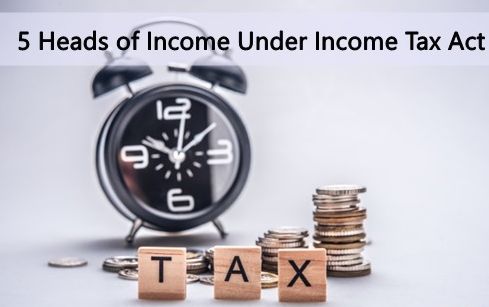Another Year - Another Budget and we are here with Budget 2020 Highlights for you.
| Individual / HUF / AOP / etc | Rate Applicable |
| Taxable Income upto Rs. 2.5 lakhs | Nil |
| INR 2,50,001 to INR 5,00,000 | 5% |
| INR 5,00,001 to INR 10,00,000 | 20% |
| More than INR 10,00,000 | 30% |
You may have noticed the slabs given at the top of this page - yes, these still apply. Read on to find out how.
Our first impressions - the budget looked to continue with the structural reforms that have been getting announced in recent times, including easing of taxpayer compliances. So much so that they have introduced a new section 119A in the Income Tax Act, to notify a Taxpayer’s charter, which shall be adopted by the CBDT in some time.
However, we feel that the execution, especially of the idea of simplification of personal income tax - of reducing the deductions / exemptions and reducing the tax rates, could have been better. We shall cover the key highlights first, and then explain why we feel so.
Key Highlights:
Corporate tax cut in Sep 2019: As most readers would be aware by now, there was a structural change in September 2019, in the way corporations are taxed. The corporate tax rate for new companies in the manufacturing sector was slashed to 15%. This concessional rate is available for companies that start their activities on or before 31 March 2023. For the existing companies, the tax rate is 22%. This reduced rate will be applicable for companies that do not avail any other exemptions / deductions as specified. Such companies will also be exempted from the Minimum Alternate Tax provisions.
On similar lines, the tax rate applicable for co operative societies has been reduced to 22% to ensure that they have a tax burden at par with corporates.
There is a similar thought process attempted in the current budget, on the Personal Income Tax front - there are concessional tax rates available for assessees who are willing to forgo of some of the specified deductions *.
Below are the revised slabs applicable for assessees willing to 'opt in' for this regime.
Taxable Income Slab | Existing Tax Rates | New Tax Rates |
0 - 2.5 Lakh | Exempt | Exempt |
2.5 - 5 Lakh | 5% | 5% |
5 - 7.5 Lakh | 20% | 10% |
7.5 - 10 Lakh | 20% | 15% |
10 - 12.5 Lakh | 30% | 20% |
12.5 - 15 Lakh | 30% | 25% |
Above 15 Lakh | 30% | 30% |
* Assessees opting for this scheme will forgo below key items of focus of this article, amongst other items (Refer the footnote 1 for full list verbatim):
A. Deductions / Exemptions:
(1) Leave Travel Assistance (LTA) (Section 10(5));
(2) House Rent Allowance (HRA) (Section 10(13A));
(3) Any other receipts in the nature of reimbursements, other than perquisites (Section 10(14));
(4) Standard deduction of INR 1,500 per minor child whose income has been clubbed in the return (Section 10(32));
(5) Standard deduction from Salary income of INR 50,000 and a deduction of INR 2,500 pa from Salary income (subject to actuals) (Section 16);
(6) Deduction in respect of Interest paid on Housing Loan, taken for Self Occupied Property (or the additional allowable Self Occupied Property) (Section 24 (b) read with section 23(2));
(7) All Chapter VIA deductions (Sections 80A upto 80VV). This includes deductions like Life Insurance and Health Insurance premia, tax saver FDs and Mutual funds, PPF contributions by employee, Savings account interest deduction, deductions towards interest expense on loans availed for affordable housing as well as buying electric vehicles, etc.
(8) However, 80CCD(2) and 80JJAA deductions are still allowed - Employer contribution to NPS and Deduction in respect of employment of new employees.
B. Loss setoffs will need to be foregone - under the head “Income from house property” with any other head of income.
We shall cover some more analysis on this later on in the article.
Additional deduction towards interest paid on loan availed for buying affordable house has been extended upto 31 March 2021 (Section 80EEA) - of course, this applies only for assessees continuing under the existing tax regime.
Measures have been initiated to prefill the income tax return, including pre filling of donation related data, so that an individual who opts for the new regime would need no assistance from an expert to file his return and pay income tax.
Currently, businesses having turnover of more than INR 1 Crore are required to get their books of accounts audited by an accountant (section 44AB). This limit is now revised to INR 5 Crores. In order to boost less cash economy this limit is applicable only to businesses which carry out less than 5% of their business transactions in cash.
Dividend Distribution Tax has been removed, and the dividend will now be taxed in the hands of the recipient - important to note here, that till now, Dividend earned on Equity shares of Indian companies was tax free. Henceforth, this will be taxable as per the slab rates.
As a next step to faceless assessments, faceless appeals are being introduced to further improve transparency in the assessment proceedings and improve ease of compliance.
A simplified way of sms based filing for nil GST return is also in a pilot mode currently.
A system of cash reward is envisaged to incentivise customers to seek invoice.
Deposit insurance coverage is increased to INR 5 lakhs from current INR 1 lakh per depositor.
Government will also be looking to undertake some key divestments. This includes the balance stake in IDBI Bank via stock exchange and a part of its stake in LIC via the IPO route. Our own view (which may be different for others) is that ideally the government should not be looking to run businesses. They should be facilitators rather than running a business. This is another right step towards that ideal state, and it will also ensure more efficiency in day to day operations of these entities.
Apart from these, there are few other marquee announcements, which are worth a mention here:
There is an increased focus on use of solar energy which can be seen from some of the measures announced. The PM-KUSUM scheme is being expanded to provide 20 lakh farmers with pump sets linked to solar energy, to reduce their dependence on diesel and kerosene. In addition, a scheme to enable farmers to set up solar power generation capacity on their fallow / barren lands and to sell it to the grid would be operationalized.
Indian Railways will be setting up a large solar power capacity alongside the rail tracks, on the land owned by the railways.
Four station redevelopment projects and operation of 150 passenger trains would be done through PPP mode. The process of inviting private participation is underway. And more Tejas type trains will connect iconic tourist destinations.
It is proposed to provide an outlay of INR 8000 crore over a period of 5 years for the National Mission on Quantum Technologies and Applications.
Dissecting the structural changes to personal income tax regime:
Let us see 2 scenarios, where the assessee has an income of INR 16,00,000 (majorly salary income, to enable factoring in the Standard Deduction), and the availed deductions are as mentioned:
Scenario A:
Assessee availing only 80C deductions, alongwith standard deduction:
Particulars | New regime | Existing regime |
Income From multiple sources | 1,600,000.00 | 1,600,000.00 |
Exempt Incomes | ||
Petrol allowance | 0.00 | 0.00 |
Food Coupons | 0.00 | 0.00 |
Standard Deduction | 0.00 | 50,000.00 |
Net taxable income | 1,600,000.00 | 1,550,000.00 |
Income from House Property | 0.00 | 0.00 |
Total Income | 1,600,000.00 | 1,550,000.00 |
Deductions: | ||
80C | 0.00 | -150,000.00 |
80D | 0.00 | 0.00 |
80CCD(1B) | 0.00 | 0.00 |
Gross Total Income | 1,600,000.00 | 1,400,000.00 |
Tax on total income: | ||
Upto 2,50,000 | 0.00 | 0.00 |
2,50,001 - 5,00,000 | 12,500.00 | 12,500.00 |
5,00,000 - 7,50,000 | 25,000.00 | 50,000.00 |
7,50,000 - 10,00,000 | 37,500.00 | 50,000.00 |
10,00,000 - 12,50,000 | 50,000.00 | 75,000.00 |
12,50,000 - 15,00,000 | 62,500.00 | 45,000.00 |
Beyond 15,00,000 | 30,000.00 | 0.00 |
Total Income tax | 217,500.00 | 232,500.00 |
Cess | 8,700.00 | 9,300.00 |
Total taxes payable | 226,200.00 | 241,800.00 |
Net advantage / (disadvantage) | 15,600.00 |
Scenario B:
Assessee availing more deductions:
Particulars | New regime | Existing regime |
Income From multiple sources | 1,600,000.00 | 1,600,000.00 |
Exempt Incomes | ||
Petrol allowance | 0.00 | 0.00 |
Food Coupons | 0.00 | 0.00 |
Standard Deduction | 0.00 | 50,000.00 |
Net taxable income | 1,600,000.00 | 1,550,000.00 |
Income from House Property | 0.00 | -200,000.00 |
Total Income | 1,600,000.00 | 1,350,000.00 |
Deductions: | ||
80C | 0.00 | -150,000.00 |
80D | 0.00 | -50,000.00 |
80CCD(1B) | 0 | -50000 |
Gross Total Income | 1,600,000.00 | 1,100,000.00 |
Tax on total income: | ||
Upto 2,50,000 | 0.00 | 0.00 |
2,50,001 - 5,00,000 | 12,500.00 | 12,500.00 |
5,00,000 - 7,50,000 | 25,000.00 | 50,000.00 |
7,50,000 - 10,00,000 | 37,500.00 | 50,000.00 |
10,00,000 - 12,50,000 | 50,000.00 | 30,000.00 |
12,50,000 - 15,00,000 | 62,500.00 | 0.00 |
Beyond 15,00,000 | 30,000.00 | 0.00 |
Total Income tax | 217,500.00 | 142,500.00 |
Cess | 8,700.00 | 5,700.00 |
Total taxes payable | 226,200.00 | 148,200.00 |
Net advantage / (disadvantage) | -78,000.00 |
This shows that in some of the instances, where assessees are claiming lesser deductions, they will have an advantage in the form of tax savings. Else, this new regime is expected to increase the tax liability substantially. However, it is worth noting that this is currently an optional scheme. The assessees not having business income, can make a selection every year. And those having business income, can make the selection only once, and it shall apply for all subsequent years.
Also, as mentioned by the honorable Finance Minister during her ensuing press conference, it is aimed that gradually they will be moving towards this new regime, with lower income tax rates and lower deductions - again in line with simplification of Corporate taxation. There is a high probability of having only 1 option some years from now - of less deductions and less taxes.
Due to these factors, we feel that this particular reform, could have been implemented in a better way. Its intent is clear - to reduce complexity in filing tax returns, however it is not incentivising enough, or at the risk of stating the obvious - disincentivizing for an average taxpayer to adopt this scheme, since more often than not, it may end up increasing the tax burden.
Economic performance:
Lastly, but importantly, the fiscal deficit for FY 2019-20 is revised upwards to 3.8% as against an estimate of 3.3%. This deviation has been taken to accommodate the “structural reforms in the economy with unanticipated fiscal implications” as defined in the FRBM Act - which is nothing but the reforms on corporate and to an extent, personal income tax front.
A return path for fiscal consolidation has been laid out already - including the divestment targets and also partly by achieving a targeted nominal GDP growth rate of 10%. It is important to note here, that Nominal GDP is different from real GDP numbers that are usually seen in the macro data. Real GDP is nothing but Nominal GDP, after eliminating the inflation effect.
Conclusion:
We largely see this budget as a continuation of the intent of the government towards modernising and digitising the economy, and improving the ease of compliances. However, certain aspects of the implementation, like the reform on personal income tax, could have been better. Also, we would like to see some more aggressiveness on the divestment part, and further modernising the railways.
For any queries/feedback/suggestions, feel free to reach out to us at mitesh@mnpartners.in.
If you wish to avail any of our services, you can view Our Services.
Footnotes:
The total income of the individual or Hindu undivided family shall be computed,—
(i) without any exemption or deduction under the provisions of clause (5) or clause (13A) or prescribed under clause (14) (other than those as may be prescribed for this purpose) or clause (17) or clause (32), of section 10 or section 10AA or section 16 or clause (b) of section 24 (in respect of the property referred to in sub-section (2) of section 23) or clause (iia) of sub-section (1) of section 32 or section 32AD or section 33AB or section 33ABA or sub-clause (ii) or sub-clause (iia) or sub-clause (iii), of sub-section (1) or sub-section (2AA), of section 35 or section 35AD or section 35CCC or clause (iia) of section 57 or under any of the provisions of Chapter VI-A other than the provisions of sub-section (2) of section 80CCD or section 80JJAA;
(ii) without set off of any loss,— (a) carried forward or depreciation from any earlier assessment year, if such loss or depreciation is attributable to any of the deductions referred to in clause (i); (b) under the head “Income from house property” with any other head of income;
(iii) by claiming the depreciation, if any, under any provision of section 32, except clause (iia) of sub-section (1) of the said section, determined in such manner as may be prescribed; and
(iv) without any exemption or deduction for allowances or perquisite, by whatever name called, provided under any other law for the time being in force.



